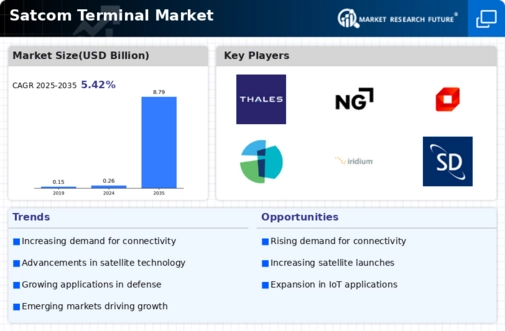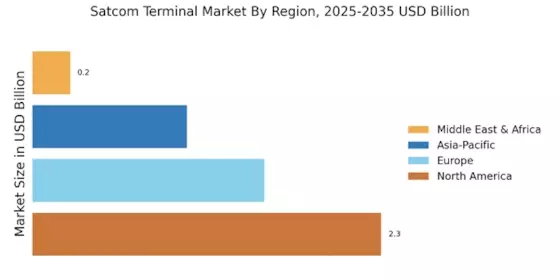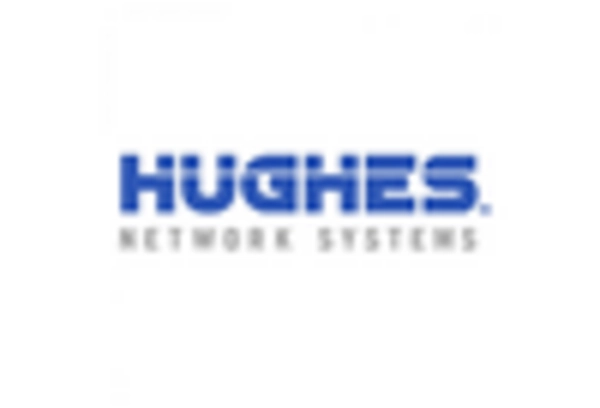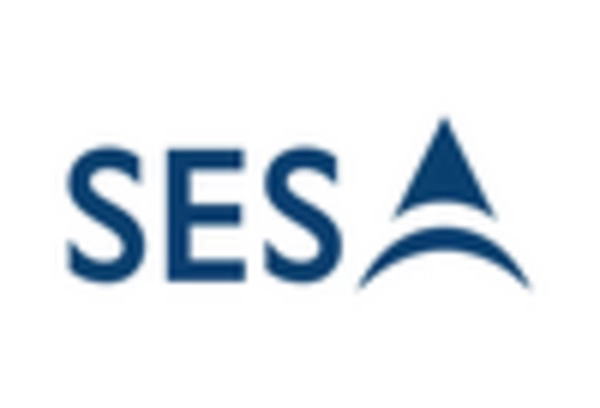Rising Demand for Connectivity
The Satcom Terminal Market experiences a notable surge in demand for connectivity solutions across various sectors. As businesses and governments increasingly rely on satellite communications for critical operations, the need for reliable and efficient satcom terminals becomes paramount. In 2025, the market is projected to grow at a compound annual growth rate of approximately 8 percent, driven by the expansion of internet services in remote areas and the increasing adoption of IoT devices. This trend indicates that organizations are prioritizing seamless communication capabilities, which further propels the growth of the Satcom Terminal Market. The integration of satellite technology into everyday applications, such as telemedicine and remote education, underscores the essential role of satcom terminals in enhancing connectivity.
Expansion of Satellite Communication Services
The expansion of satellite communication services is a key driver for the Satcom Terminal Market. As service providers enhance their offerings, the demand for satcom terminals is expected to rise correspondingly. The proliferation of satellite internet services, particularly in underserved regions, is creating new opportunities for terminal manufacturers. In 2025, the market is likely to witness a significant increase in the number of satellite service providers, which will further stimulate the demand for compatible satcom terminals. This expansion suggests that the Satcom Terminal Market is poised for growth, as more users seek reliable communication solutions in various sectors, including maritime, aviation, and emergency response.
Technological Advancements in Satellite Systems
Technological advancements play a crucial role in shaping the Satcom Terminal Market. Innovations in satellite technology, such as high-throughput satellites (HTS) and low Earth orbit (LEO) systems, are enhancing the performance and capabilities of satcom terminals. These advancements enable higher data rates and improved coverage, which are vital for meeting the increasing demands of users. The introduction of software-defined radios and advanced modulation techniques further enhances the efficiency of satellite communications. As a result, the market is witnessing a shift towards more sophisticated satcom terminals that can support diverse applications, from broadcasting to military communications. This evolution suggests that the Satcom Terminal Market is on the brink of a technological revolution, potentially leading to new business models and service offerings.
Increased Focus on Remote Operations and Telecommuting
The Satcom Terminal Market is experiencing a shift due to the increased focus on remote operations and telecommuting. Organizations are recognizing the need for robust communication solutions that can support remote workforces, particularly in industries such as oil and gas, mining, and logistics. The demand for satcom terminals that facilitate reliable communication in remote locations is on the rise. In 2025, it is anticipated that the market will see a surge in the adoption of portable and mobile satcom terminals, catering to the needs of professionals working in isolated environments. This trend indicates that the Satcom Terminal Market is adapting to the evolving landscape of work, emphasizing the importance of connectivity in ensuring operational efficiency.
Growing Importance of Defense and Security Applications
The Satcom Terminal Market is significantly influenced by the growing importance of defense and security applications. Governments worldwide are investing heavily in satellite communication systems to enhance national security and military operations. The demand for secure and reliable communication channels in defense sectors is driving the adoption of advanced satcom terminals. In 2025, it is estimated that defense-related applications will account for a substantial share of the market, reflecting the increasing reliance on satellite communications for strategic operations. This trend indicates that the Satcom Terminal Market is not only vital for commercial applications but also plays a critical role in ensuring national security and operational readiness.


















Leave a Comment